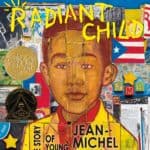
2
JunIt’s a Vibe: Slow-Paced Books
 As a librarian, I often get questions from folks who are looking for books that are fast paced and have lots of action. Most people seem keen to avoid getting bogged down with wordy description or intricate world-building and get straight to the plot. While I also love an action-packed story, living and reading through a global pandemic has given me a new appreciation for slower paced fiction.
As a librarian, I often get questions from folks who are looking for books that are fast paced and have lots of action. Most people seem keen to avoid getting bogged down with wordy description or intricate world-building and get straight to the plot. While I also love an action-packed story, living and reading through a global pandemic has given me a new appreciation for slower paced fiction.
I think I speak for many when I say that I would really like a break from living through these “unprecedented times.” Because I am the sort of person who can get swept up by the emotion surrounding current events, I keep my news reading to a limited time period in the morning, when I can chat with my husband and keep myself grounded before anxiety takes over. When I read at night, I avoid the news in favor of books that keep me calm and help me relax after a busy day. Regardless of genre, I’ve found that slower-paced novels that focus on the interior life of the characters instead of a high-octane story line really allow me to unplug and recharge myself. Slower paced books often focus on the interior psychology of a character or on observations about everyday existence to make their points. It can be hard to capture exactly what makes these books so absorbing but, as young people say, it’s a vibe.
It’s pretty easy to sell an exciting book to a friend, a coworker or a library patron. A cool premise or an unusual plot twist usually spark the interest of other readers, but it can be pretty tricky to describe why a slower-paced book is awesome. At a recent staff event, a coworker asked me about Klara and the Sun by Kazuo Ishiguro, which I had just finished reading. My response was, “I had to lie down after I finished reading it.” When she followed up by asking me to summarize the plot, I really struggled! The main premise of Ishiguro’s latest novel is a lonely teen girl purchases an AI robot to be her friend while she convalesces during a mysterious illness. The book’s episodic structure and reliance on an unreliable first-person narrator make it tough to explain exactly what happens, but my initial reply was more about the heavy emotional impact of Ishiguro’s evocative writing. Klara’s internal reflections and attempts to understand everyday human behavior are a powerful meditation on what it means to love another person.
Sweeping multigenerational dramas are another favorite subgenre in the slow-paced book category. In these books, it’s not that nothing happens, but often that so many things happen which make it difficult to summarize for a book recommendation. One of my favorite reads from 2019 was Pachinko, a beautifully told look inside the lives and identities of a Zainichi (ethnically Korean) family living in early 20th century Japan. Sunja, the daughter of disabled Korean fisherman falls for the empty promises of a wealthy Japanese businessman and ends up journeying to Japan in search of a better life for her son. The richly drawn characters’ experiences of the harsh realities of a xenophobic society lead the reader to think about how one decision to change the path of an entire family for years to come.
Similarly, Yaa Gyasi’s debut novel, Homegoing, is another example of a multigenerational slower read. This compelling book takes place over 300 years and organizes each chapter by a character in a successive generation from a family torn apart by the slave trade in Ghana. Two half sisters are born in two villages of 18th century Ghana: Effia lives a life of luxury as an Englishman’s wife in Cape Coast Castle while her half sister Esi is imprisoned as a captor of the slave trade in the Castle’s horrific dungeons. Effia’s side of the family wrestles with the many effects of British colonialism for generations, while Esi’s journey takes her descendants through slavery in the American South, the Civil War and the Great Migration.
The last type of slow-paced novel features in-depth character studies. The titular character of Colm Toibin’s Nora Webster embarks on a journey of self-discovery after years of devotion to her husband ends abruptly when he dies. Nora’s struggle with grief and becoming an independent woman in small town Ireland isn’t monumental or action packed but it does illuminate how our circumstances can change in the blink of an eye. Nora’s everyday decisions, like whether or not to sell her summer house, reveal how we can refashion our lives and carry on, even after a life altering loss.
Instead of loss, Lily King’s second novel, Writers and Lovers, contemplates one woman’s quest to be creative. Casey Peabody’s life is going nowhere. Reeling from her mother’s death, she lives in a garage while working a grueling waitress job in Cambridge, MA during the late 90s. Her unfinished novel and the desire to create hang over every bad decision she makes, including falling for two very different men. As she grapples with the mundane demands of paying the bills and being someone’s girlfriend, she stays determined to finish her novel and be the successful writer she’s always dreamed of being. Once again, Casey’s outer life seems to go in circles, but inwardly her growth as an artist and as a person is inspiring.
Books don’t have to be fast-paced to be exciting. Slowing down with character driven fiction can be a great way to take a break from daily life and explore an experience through someone else’s eyes. So next time you see the words “ponderous” or “descriptive” when reading a book review, don’t let that put you off! Slow-paced books can drag you off for an equally thrilling adventure. It just won’t be a quick one.
Kate Tigue is the Head of Youth Services at the Morrill Memorial Library. Look for her article in the May 20, 2021 issue of the Transcript and Bulletin.








